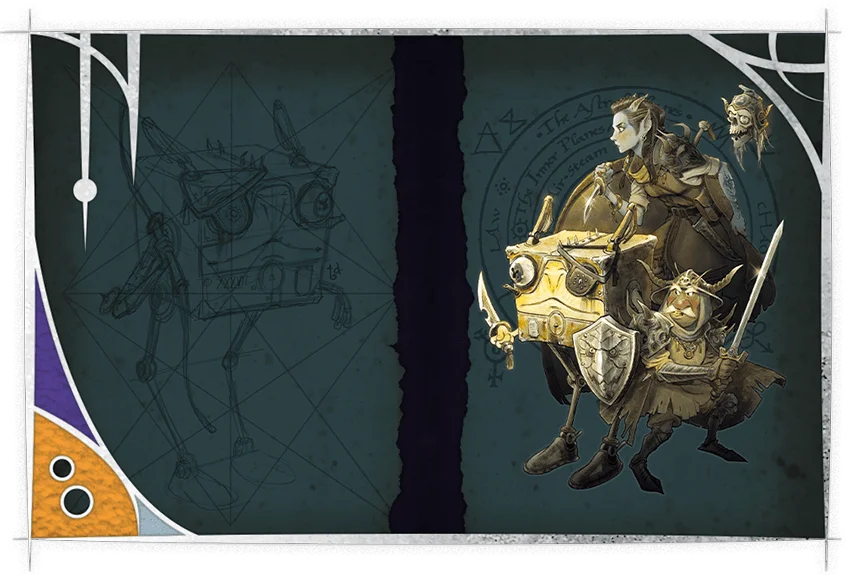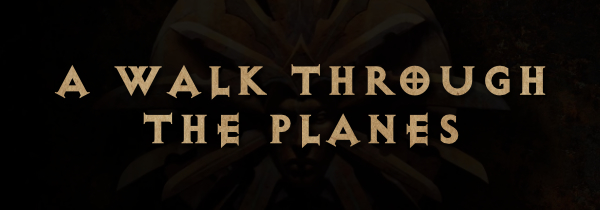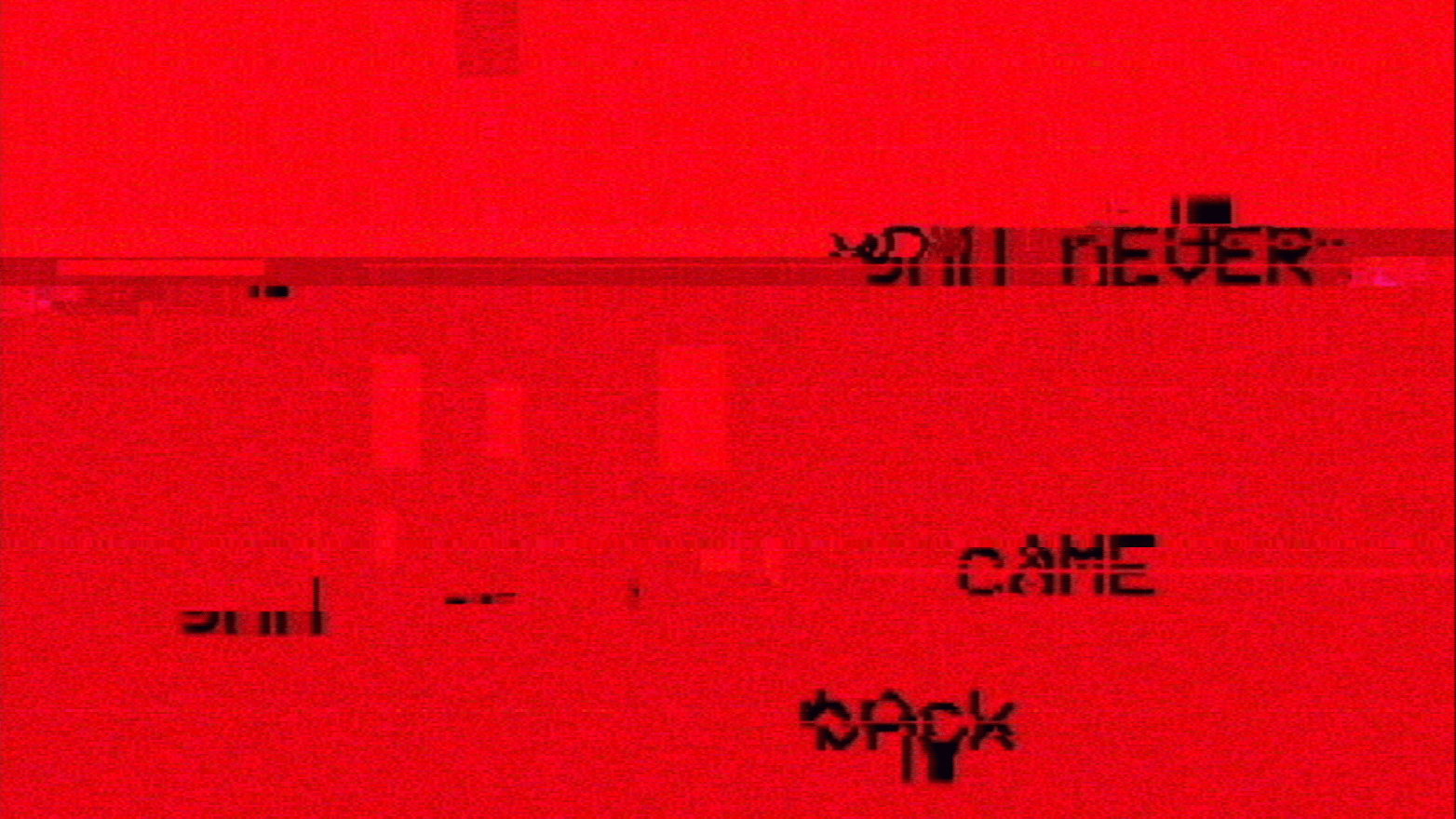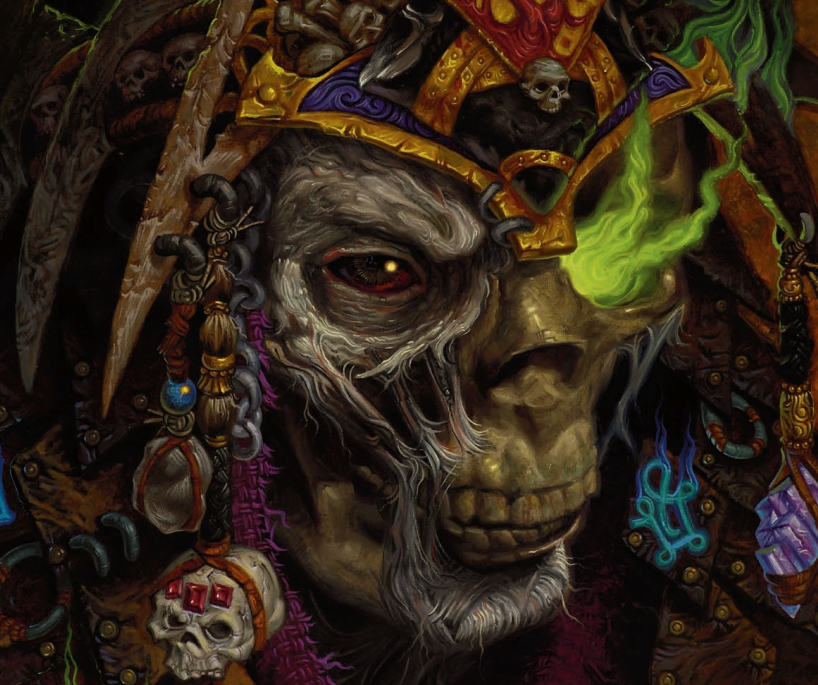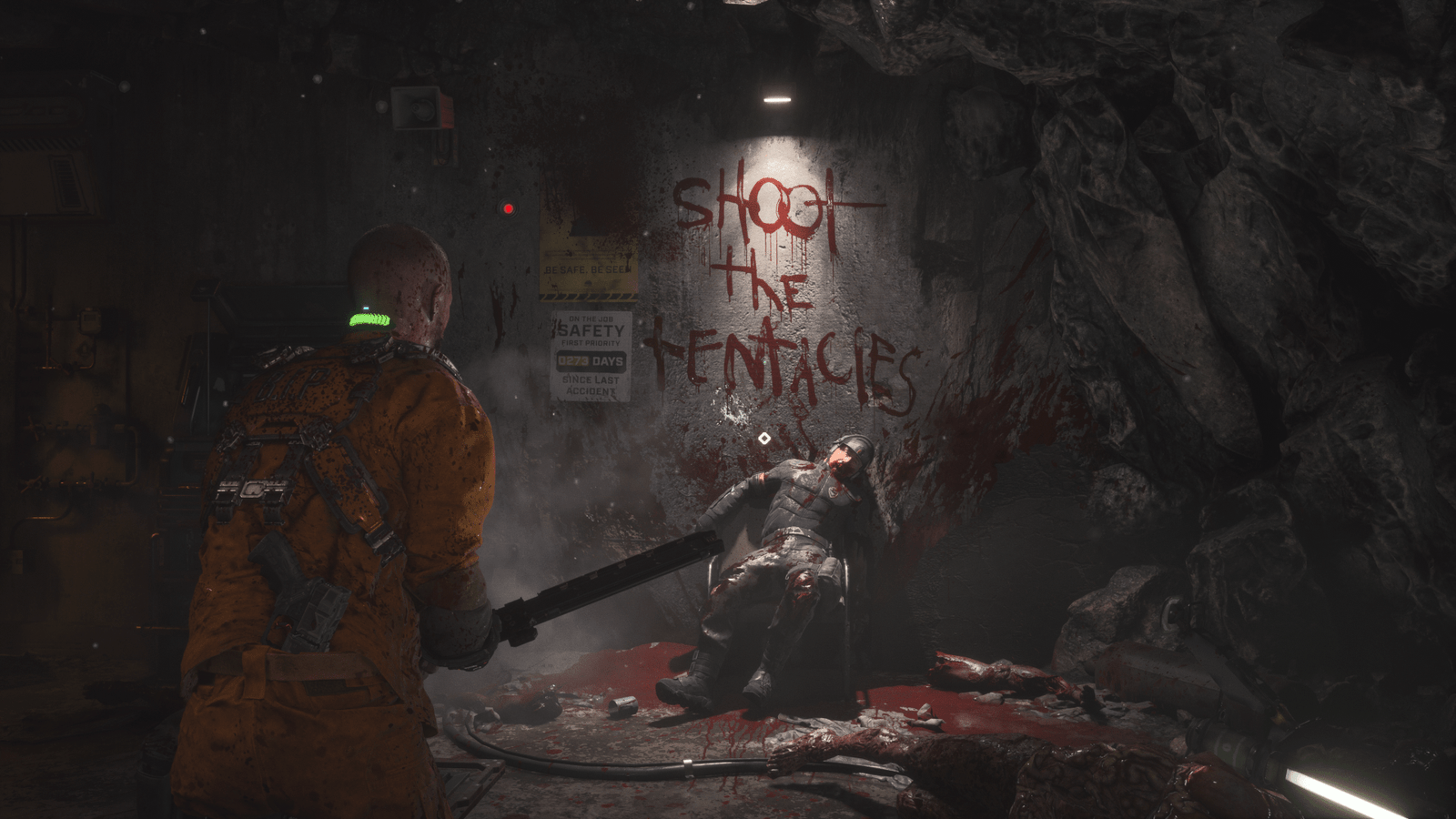While Planescape had some of the best supplements, i.e. splatbooks, in the history of roleplaying games, its track record for actual adventures wasn’t nearly so hot. A lot of the lure of the setting is just hanging out in a strange world and interacting with it, which made a lot of the more traditional Dungeons & Dragons plots feel off. Who wants to do a dungeon crawl when you can change the multiverse just as much by, say, circulating a convincing pamphlet? I’m quite fond of more than a few of the setting’s adventures, but in almost no cases were they modules I’d want to run strictly as-written. That tradition lives on with Turn of Fortune’s Wheel, an adventure that features more than a few excellent ideas, while also displaying the most cringingly awful concepts in the history of the setting and an overall plot with holes bigger than the Grand Canyon. I absolutely do not suggest you try to pick it up and play, but it has good enough bones that I can see transforming it into a campaign nonetheless, almost despite some of the original material.
The concept at its heart is quite good. A multiversal glitch is splitting the PCs into several entities, offering them a form of limited immortality but at the same time interfering with their memories. Their goal is to put an end to this problem, though it’s quite possible that figuring out that this is what they’re trying to do takes a long time for them to discover. Along the way, they wander through a bit of Sigil, visit (too) many gate-towns in the Outlands, and eventually traipse around a set of strange tunnels within the spire itself near a Rilmani city. All of this is wonderful, it’s just that the specifics of both how this fits together and the locations/characters themselves are frequently nonsensical and terrible.
Part 1: Schemes in Sigil begins with the PCs waking up in the mortuary a la Planescape: Torment. And if that homage was somehow too subtle for you, it’s literally Morte who wakes up the characters. While his cameo is short-lived, it also goes along with Ignus’ still-roasting body in the Smoldering Corpse to show that this edition considers that game largely canonical, but weirdly its events take place in the future (the last line of this entire book is even a quote from Adahn, who was one of the more clever conceits in an already clever computer game). Which I suppose is fine, though for the most part his immediate exit makes Morte grating and unnecessary. This is a cameo for the sake of a cameo and in no way enhances the adventure itself, it simply serves to smile and nod at players familiar with the video game. It is awful and I hate it.
After meeting with Morte, the PCs make their way to freedom outside the mortuary, which takes up the rest of the first chapter. All of this works, with some puzzles reminiscent of Torment (a key in a body) and more than a few likely deathtraps in order to get players accustomed to the idea of glitch selves. It’s a little campy, but not in a bad way, and there are multiple possible exits for players to discover. The only demerit comes from a demilich (yes, a CR 18 monster) being given the menial task of writing epitaphs and some jokes going along with this, but making adjustments here would take minimal effort. While ludicrously unoriginal, this beginning is decent enough, even if you don’t want to switch out the demilich for a more “realistic” undead creature.
Chapter 2 begins with an off-putting parody of classic Planescape cant, but picks up from there and has a wonderful openness as the DM is encouraged to give players all the time they want to explore Sigil before moving the plot forward. A few possible encounters crop up, and while they feel overly video game-y and simplistic—this is true for almost all sidequests in the book—they fit tonally with the city. This section also taught me that Fifth Edition has radically changed the shadar-kai from their Third Edition incarnation, which like so many of these alterations seems completely unnecessary, but I suppose that’s really outside the scope of this review (I think that this happened in Fourth Edition and they kept it for some asinine reason?). More importantly, PCs meet up with the obscure NPC Farrow, originally featured in Uncaged: Faces of Sigil. While he’s changed to a shadar-kai, his origins in Mystara are surprisingly retained, which I believe makes this the first mention of that campaign setting in all of Fifth Edition. He’s given one new personality for the Hands of Havoc, but both of the ones for the Harmonium and the Sensates are the same as before, a touch I appreciate. For reasons largely convoluted and ridiculous, Farrow leads the PCs to Undersigil in order to evade capture on the way to Shemeshka, and I should note that even his allegiance to the arcanaloth is retained from before as well.
The first encounter listed for Undersigil is good. Players may meet up with the Us, the hive-mind NPC made up of hundreds of cranium rats. Unfortunately, this is used to segue into a terrible, terrible encounter with the goddamn Coterie of Cakes faction you might remember me hating on in my review of Sigil and the Outlands a couple weeks ago. Part of this concerns an Alice’s Adventures in Wonderland parody no one needed, but mostly this encounter serves just to tell players that Sigil is a stupid fucking location and the multiverse is dumb. This is the full extent of players’ time in Undersigil, too, and once finished with this miserable pantomime they pop out at Fortune’s Wheel, the Lady’s Ward casino now under new management by Shemeshka.
Before I go any further, I should probably expand about why this entire Coterie of Cakes business fails so miserably, especially as we’re going to hit several other missed attempts at comedy as soon as PCs get inside the casino. D&D, and with it the vast majority of RPGs, is a funny game. I’ve played with dozens and dozens (hundreds?) of people, many groups, and nearly as many DMs over the past three decades, and invariably there has been laughter at the table. However, the humor of the game comes from the players, not the world. A zany world is like a comedian laughing at their own jokes, or a manager trying too hard to be an entertainer at a meeting. The game is inherently funny (the very apparatus of a group of people telling collaborative stories in the form of a roleplaying game is in itself funny, and at the very least likely to illicit titters due to the taboo-breaking nature of this social interaction) and so trying to add more to this ends up in nearly every case as cringe. This also prevents players from creating truly funny bits, because the emphasis is moved away from their actions and onto the silly world at hand. I am certain that some people like this type of thing, but they strike me as the same type of people who want you to attend their amateur improv shows. Even apart from the way that this type of debasement completely wrecks any sense of reality within the setting, it more importantly shoves players out from any possible suspension of disbelief. If nothing is to be taken seriously, then conversely nothing ends up funny, because the juxtaposition of something being out of place no longer exists.
Aside from these more academic concerns above, the other problem with supposedly funny setpieces is that they so rarely are. Think of how many legitimately funny video games you’ve played, and compare that with the number that think they’re funny. Humor is difficult to do well—I should know, I spent years writing almost exclusively comedy—and is especially hard to create in a corporate environment devoid of a particular point of view. My guess is that the purpose of these supposedly funny interludes within the adventure are to make the multiverse seem like a quirky, whimsical place, but the end result is that it feels dumb, cutesy, and illogical. Any sense that this might somehow be a real location is going to dissipate the moment jokes are coming not from characters but from the very design itself. Throughout this book, I constantly found myself reading parts I’d be too embarrassed to ever want to use because the sophomoric ideas being displayed are simply not legitimately funny. You might laugh to yourself for half a second when first reading about the Coterie of Cakers or other such nonsense, but if you’re laughing at part of a world for how dumb it is, then you’re also laughing at how dumb the world itself is. Which at least for me is not something I want to spend dozens and dozens of hours within over a period of months or years when I could be imagining a world that isn’t completely idiotic instead.
Ok, back to the adventure at hand. Fortune’s Wheel is radically adjusted from its conception in In the Cage, but the architectural changes are really not the issue at hand. Players can run into a couple of other prominent NPCs from the setting, Rule-of-Three and Alluvius “Lu” Ruskin, and there’s some campy but not-completely-terrible details regarding the staff and logistics of the casino. However, stupidity is soon to arise, don’t you worry. For reasons left completely unexplained, four of the slot machines are duodrones that “work for the casino.” Which is not really a thing modrons do, and even if it were, why would they become slots, and also why is that necessary given that there are plenty of normal slot machines? Ugh. It’s a lame attempt at being cutesy that causes many questions about the multiverse and makes it all seem fucking dumb.
But things don’t get truly nadir-stupid until we hit the timed events. One hour into their visit, “Three amicable Vecna impersonators—doppelgangers mirroring the archlich of the same name—walk the casino floor doing inaccurate but amusing impressions.” I have so many frustrations with encounter this that I don’t even know where to start. Reading through this section makes me feel so exhausted that I’m just not up for unpacking its awfulness. Suffice to say, the world of Planescape, and with it all of D&D, is now a dumb joke. Let’s pretend this never happened and move on as quickly as possible.
When Shemeshka finally arrives to meet with the PCs, things seem initially more sensible. She says that she can help them in exchange for finding a rogue modron who ran off with the casino’s accounting information. This is a lie, which is not the problem. Rather, the issue is that by doing this instead of, say, locking the characters and their glitch-selves up, or dunking them in the Styx, or trying any other methodology to stop them, she’s ensuring the demise of her entire plot. She knows that this modron holds the key to stopping her, and she later reveals that she has killed the characters many times in order to prevent them from halting her plans… yet here she is doing her utmost to unite these two forces that must be united in order to stop her. WHAT?!?! Shemeshka is here revealed to be the dumbest fiend in the entire multiverse, and more committed to self-foiling than a G.I. Joe villain. While I was fine enough with all of this when first reading through it, that was because I didn’t know how Turn of Fortune’s Wheel ends. Now, while rereading this section for our review, I’m flabbergasted by the illogical moronity being displayed here. I’m not being hyperbolic, either, it really is that ridiculous once you think about it for more than half a second.
So ends Part 1 of the adventure, and unfortunately things aren’t going to get better anytime soon. PCs head through a portal to the Outlands, where by insane coincidence the modron they’re seeking has recently been spotted nearby (this is a standard story trope, so not a big deal, and could be explained away had the authors tried). They free the owner of a walking castle from a group of yugoloths taking over the joint, and in return for this assistance she decides to put her fortress at the group’s disposal, and also gifts them with a damaged mimir, henceforth known as the Mosaic Mimir… which also leads to another huge and ridiculous plot hole. The entire rest of Part 2 is spent trying to restore the memories of this mimir, but why, you might ask, is this a necessary task? Without it, apparently characters are unable to get the most basic of information about the Great Modron March, which aside from its surprise timing (“for tenebrous reasons”) was the same as every other march. Which means both that this information is readily available from practically any semi-knowledgeable source in the planes, i.e. a random tout in Sigil, it’s also certainly contained by every other mimir in the multiverse. Other than being broken, there is nothing about the Mosaic Mimir that seems to be in any way unique to it compared with the countless other mimirs available.
There is nothing preventing players from returning to Sigil, obtaining this extremely basic information, and skipping the entire second (and longest) chapter of the adventure. Now, it’s easy to fix this issue with your own adventure by giving the Mosaic Mimir some sort of specific knowledge that’s invaluable for finding the rogue modron, but as written that’s simply not the case. All of its information is so basic I’d consider it something like a DC 10 knowledge arcana check to discover, and maybe not even that. How would characters go about simply picking up a functioning mimir instead, you ask? Well the portal they arrived in the Outlands with was in fact two-way, so, uhh, they can just go straight back to Sigil, head to the Market Ward, and call it a day. I’m going to pretend for the sake of the rest of this write-up that your players are brain dead and don’t do this, but using this as a plot engine drove me a bit out of my mind. I kept rereading this section in my search for why anyone would undertake this lengthy quest to seven gate-towns, but there really is nothing to be found. The book expects players to travel hither and yon across the Outlands in order to find out nothing of any real substance. Might as well have them searching for what planes modrons come from, or discovering what the Blood War is, or trying to find a sword to stab themselves in the head. Sheesh.
Assuming your players go on this fool’s errand, that means visiting the portals located in Automota, Curst, Excelsior, Faunel, Glorium, Rigus, and Sylvania. Several of these towns had never been seen before in an adventure, and I like having an excuse to visit them all, it’s just that the actual mcguffin given to players is so fucking stupid. But the nice thing about this plot device is that it opens things up and means players can visit these locations in any order they want. Since challenges are rarely combat-based, and even if they are, the players are effectively immortal, this works great structurally and leads to a diverse and entertaining questline. What players actually do in each of these towns is a bit more questionable, but we’ll get there in a second.
Accessing Automota’s gate means getting past the town’s frustrating bureaucracy. This is likely done by an investigation into the flip side of the city, the Inverse, which apparently is now even gravitationally reversed from the surface. Someone from there stole the logbook from the Concord Terminus, and only the PCs can solve the mystery of who did it </yawn>. Players do that, and… yeah that’s pretty much it. Each of the gate-towns is only given four pages of material, which is maybe enough for a single session if you and the players flesh things out a lot, but on the whole these tend to be little fetch-quest type things that are slightly engaging, but that’s the best that can be said for them. 96 pages just isn’t enough to do more than pass by these locations, give players a brief taste of what it’s like there, then send them on their way. It’s the gate-town tourist experience, and if you’re looking for depth then you’re in the wrong adventure. I would’ve preferred players visit, say, three gate-towns, each of which has twice as much material and a more worthwhile quest, but that simply wasn’t to be.
The challenge with Curst isn’t getting to the gate to Carceri, it’s leaving the town. While doing so, players might end up involved with helping a petitioner escape the city in order to find his way to the correct afterlife, though this also requires them to be virtuous in order to give a damn. Regardless, this might be my favorite of all the gate-town mini-quests, as I like the level of the stakes (the fate of a soul is exactly the type of thing Planescape should care about), and the twist on this challenge perfectly encapsulates the essence of the city.
If players do choose to help that petitioner, they likely head next to Excelsior in order to escort them toward Mount Celestia. Here, they can easily make their way to the gate and leave immediately if they so choose. They can also become involved with a weird soul stealing plot involving iron flasks and a night hag just outside of town, but really that’s up to them. None of this is terribly compelling, as two-and-a-half pages just isn’t enough space to detail a deep investigation, and as such there’s basically one clue, one suspect, and a pat ending. But it’s fine enough to take up a session, I suppose, and Excelsior always kinda sucked anyhow.
Faunel essentially has players dealing with the single plot-thread detailed for the town in Sigil and the Outlands, negotiating between the three animal factions trying to run the joint. Turns out, it’s the Vile Hunt (first seen in Well of Worlds) stirring up trouble, and the solution is to go and beat them up. The Vile Hunt is now much less interesting than they were, though, consisting of gnolls who lack the perverted philosophical bent of the sect’s past incarnation. Oh, and if the PCs find this whole plot kinda lackluster, it’s another one they can ignore entirely by quickly nabbing the mimir memory from the gate and then getting the hell out of dodge. My main frustration here is that the Vile Hunt is now a group who does evil because, umm, they’re evil, which is always a particularly sorry motivation, especially in a supposedly complex world like Planescape’s. That’s right, for all the dealings with multiple competing groups without a clearly correct ethical answer that this chapter promises, it ultimately boils down to beating up the bad guys.
In Glorium, the adventure takes advantage of the fact that both of the town’s portals are miserable to get to, and only one of them is actually in the Outlands. Players fight a series of whirlwyrms, i.e. giant crocodiles, and do their best to prove they’re the most heroic heroes heroing it up currently. That’s pretty much it, though there are a lot of really dopy contests they can take part in along the way, all of which are just making a skill check and comparing the result. It’s all totally fine, I give it maybe a C+/B-.
Rigus is if anything a bit toned down from its prior self, but this actually makes for a more believable location. In order to gain access to the portal, players need to defend the city from Acheron’s incursions, which have been particularly bad due to a spy feeding information to the enemy. While mostly this is going to mean a single battle decides things, at least it’s a pretty cool one, with gigantic iron projectiles from Acheron being blasted out from the portal in order to decimate the local troops. Maybe this isn’t the most exciting investigation, but it feels properly Rigus-y, and I rather like the whole affair as a single-session scenario.
The challenge in Sylvania is figuring out where the hell the portal currently is. In order to do this, players need to placate a bratty empyrean, i.e. the Celestial child of a god of storms, who’s pissed about not being allowed into a party. As ridiculous as this may sound, it fits within the overall vibe of Sylvania, and it’s ultimately about dealing with a sibling rivalry that’s gotten out of hand due to the power levels involved. That being said, what does it mean for someone to be “a retired god of the dead” given the role deities play in this universe? Whatever, essentially this is a fun scenario with a bunch of roleplaying, much of which can quite easily go wrong and lead to disasters. It is the good type of funny, in that it treats this god-child’s dumb problem with seriousness, and the ridiculousness is going to derive from how that plays out. I’m still unclear what differentiates any of what happens here from what we might see in the Feywild, though….
Chapter 12 brings in other possible encounters PCs might face while wandering about the Outlands on this unnecessary quest. The glitch random encounters are all good and full of flavor, even if they’re extremely short. Conversely, the first of the “real” encounters is another one of those full cringe events. Remember in Twilight when those vampires play baseball and as a result you want to strangle your brain with your tonsils? Well if so, prepare to have that same feeling again with “Angels in the Outlands,” a scenario in which the PCs take part (or just observe) a baseball match between Celestials and Fiends. Did I say, “baseball”? What I meant was “spireball,” because here there’s only two bases instead of three and instead of hitting a ball with a bat I quit roleplaying games for all time out of shame.
Thank God that isn’t the only major encounter for the rest of the Outlands. “Mausoleum of Chronepsis” involves assisting a time dragon named Renesnuprah, which is made interesting because unlike you this dragon isn’t moving forward in time and so their age and situation isn’t changing linearly. It’s also a series of small encounters that seem best when played in parts over a few sessions so as to help with the mystery of this dragon’s “past” with the PCs. While a bit slight, it’s a flavorful way of involving time travel that somehow doesn’t feel dopey. I haven’t seen anything quite like this before, and consider it a fun thing to use in any Planescape campaign, regardless of the rest of this book. The other event is “Semuanya’s Bog,” and it’s much simpler, consisting of players helping a group of petitioners to reach their god’s realm. Oh, and while there they can take part in more of those dumb skillcheck contests. Meh, I’d forgotten about this bit entirely until I hit it right now with my reread.
I don’t think I can do a better job of summarizing the final chapter of Part 2 than the book does itself:
Once the characters restore the Mosaic Mimir’s missing data, the magic device relates the information from “The Last Great Modron March” section in chapter 4. From this, the characters learn that the missing modron, R04M, likely followed the march’s path to Dendradis, a rilmani community carved into the Spire. Upon traveling to Dendradis, the characters meet Ascetelis, a rilmani who offers to escort them into the Spire where the modron was last seen. Within the Spire, surrounded by mysteries of the multiverse, the characters finally catch up to R04M—but they’re not the first to do so.
The concept of Dendradis is strong and worth exploring, but it receives essentially no new information from what we read in Sigil and the Outlands, not even a generalized map. Ascetalis is in fact a spy, but like Shemeshka their plan is moronic. Their goal is theoretically to kill both the party and the rogue modron, but instead of doing this piecemeal like any sane individual would, they decide to help you find the modron and then kill everyone afterward as if this makes the tiniest bit of sense. With her help, the PCs make their way into the spire itself, which again feels lacking because it’s missing maps or decent illustrations to make what should be a strange location come alive. Transforming the inside of the Spire into a place to explore was a wonderful idea, but the way this by necessity conflicts with previous versions of the Outlands’ anti-magic effects also makes this hard to use except with this new version of Planescape. Locations like the Desert of Rust are just passed through uneventfully, and what should be an epic and magical space feels weirdly dull. And why make sights within the Spire randomized rather than just designing the location? What possible gain is there in making people roll a d4 here?
Even so, eventually there are some cool developments, the first of which is an encounter with a CR ½ piercer demigod, Kirgaz Vizt the Unerring Avalanche, who is legitimately hilarious in a way that derives from his abilities. “Legends of Kirgaz say the demigod has never missed a target. If Kirgaz uses its Drop action and misses its target, the demigod becomes obsessed with that creature. Employing its immortality and ability to teleport, Kirgaz haunts the target of its obsession, dropping from unlikely places day after day until it strikes the creature. After doing so, Kirgaz is satisfied and returns to the Spire.” There’s also a frog God who’s lost his memories and wants you to start worshiping him, though even if you do he’ll only forget about his new worshippers soon afterward. This isn’t as creepy or developed as I wish it was, but the idea is nevertheless cool and could be fleshed out into something memorable.
Finally, PCs come upon the Scholar, a baernoloth who also isn’t as well-developed as he should be but at least manages to pull off creepy. It wishes to share forbidden knowledge with the players just to fuck with them, and though “the veracity and implications of these secrets are up to you,” I see no reason not to believe some of these are canon, especially as they leave the listener with a magical gift. They are:
- The Spire is made of countless stacked versions of Sigil from past incarnations of the multiverse.
- Portals are alive. They’re all part of the god Aoskar, whose body forms the foundation for Dendradis, and who is thought to be dead but is far from it.
- The Whispered One is coming, but there’s still time to prevent him from claiming power over the spokes of the Great Wheel.
- The entire multiverse is inside an impossibly vast bag of holding.
The first secret is a great idea, period, and the second is also a wonderful hook for future adventures and lore. The third secret is an obvious foreshadowing to next year’s Vecna: Eve of Ruin adventure, while the last is a joke. Since the baernoloth only speaks to one player, again I don’t understand why there’s a die roll involved here, but at least that left us with more than one good idea.
Past the Scholar, the missing modron is being held by a darkweaver because, umm, I guess because why not. The modron explains that “a fancy fox fiend was trying to disassemble him” and that this fox fiend “is holding modrons hostage in a secret prison. The modrons are doing things that are bad for the planes (he can’t expound—it’s just bad).” He also gives you a platinum chip that allows entrance into the high roller rooms (“Platinum Rooms”) of Fortune’s Wheel, and with that, it’s time for Part 3 and a return to Sigil.
The Platinum Rooms are almost a good idea. After all, there should be a high roller location for the bigwigs of the multiverse to place insane bets, and that place should definitely not be in Union. At the same time, a lot of questions are raised and left unanswered by its existence, primarily ones that involve power levels. Shemeshka, as you might remember from Morte’s Planar Parade, isn’t actually that strong, and her minions are even less so. But many of the people visiting these rooms are insanely powerful, and as this location is outside of Sigil so as to allow, for instance, “A god randomly chosen from a deity list in the Player’s Handbook,” to patronize the casino, the very existence of this location makes no sense. In the classical version of Planescape, a group of fiends would bulldoze over this whole location post haste, and then perhaps be counterattacked by the githyanki, who are then besieged by mind flayers, etc. Sigil is neutral grounds because of the Lady, but she has no power here. The only other neutral ground would be at the base of the spire… which no longer has that power either. Instead, we have a location that reminds me a lot of the original version of the World Serpent Inn, which is to say a campy affair that through its very existence contradicts many other tenets of the multiverse.
Aside from a lobby, there are three game rooms, plus a security room monitoring for cheating, sort of. When your clients could theoretically include a literal luck deity I don’t understand how this is supposed to function, but let’s pretend it does and get to the games, none of which players strictly have to take part in, but it’s implied that winning them is the only way to gain entrance to the security room and Shemeshka. It doesn’t quite fit together, but then none of this part does.
The first game is titled “Dungeonland,” which is the same as an old Gygax module from 1983, though the only real reference to it made here is that “a furious woman in crimson regalia screams, “Off with their heads!” (Dungeonland is another Alice homage). Players watch adventurers and place bets on whether or not they live, possibly paying to help them out with magic items. In theory this sounds kind of cool, as bloodsports probably would be what the bigwigs of the multiverse use for gambling, but the logistics of what’s happening, as usual, is questionable. This was my favorite of the three games, up until I thought a little bit about it, at which point it became my least favorite by a wide margin. Cool.
“Supertemporal Arena” features bets about a pair of primordials battling in Elemental Chaos. Unlike with the previous event, there’s no way for players to affect what happens here, meaning it’s a similar bit of bloodsports betting, but purely randomized. Unlike the previous event, though, it only relies on viewing things, so it can kinda make sense, except perhaps for the time dilation stuff which is wonky and seems like it’s just Shemeshka putting a video on fast forward.
The final game is “Fiend’s Ante,” where you can buy into a poker game with fiends playing for the rights to demolish various Material Plane Worlds. The best strategy here is to goad the fiends into fighting each other, as you win if everyone else is dead. It’s flavorful and all, but why would a demon in a million years honor a contract written up by Shemeshka? It, again, is essentially nonsense that rewrites the rules of engagement for the multiverse in a cutesy but illogical way.
After this, the PCs likely face off against Shemeshka’s guards, who consist of a maelephant and an eater of knowledge, though one of these monsters is far, far tougher than the other, which makes their parity here wonky. Then they’ll fight Shemeshka, who has some unique lair actions going on, and ultimately learn the following from her afterward:
- Each character independently ran afoul of Shemeshka some time ago. She was responsible for their deaths but, to her surprise, they returned.
- She has killed each character dozens of times, only to have them reappear. She finally trapped each using the Resplendent Cage [a magic item not worth explaining].
- The characters still returned, but they were diminished and had their memories fractured. She had her servants dump the characters at the Mortuary.
- When the characters appeared again, she sent them to find R04M in the hope they’d never return.
- Shemeshka still has imprisoned incarnations of the characters. She can retrieve them for the characters.
- She believes that the characters’ unique situation is a result of a planar imbalance caused by a group of modrons lost in the Outlands. She hopes that by manipulating the data these modrons record, she can profitably influence the workings of their home plane, Mechanus.
The logic involved with having them sent to find R04M is insane, as pointed out above, but I take just as much issue with the final point, that through this she can profit from screwing up the multiverse. Umm…. how? This isn’t explained, despite that this is a question almost guaranteed to be asked by PCs, leaving the DM in a bad spot to have to make something dopey up immediately. Also dopey: “As soon as she has shared this information, or if she is forced into battle after relating this information, Shemeshka uses an amulet of the planes to escape.” This makes even less sense! If she can leave at any time, why would she wait until after she explains her plans to the characters? I just… gah, this entire situation is breaking my brain.
No longer glitching out, the characters raise to 17th level and return to the Outlands to find those missing modrons. But where actually are they, you ask? Well for reasons completely unexplained, R04M now knows almost exactly where they are and how to fix things. Wait, what? Why couldn’t he have said this before and just skipped the whole return to Shemeshka business? *sigh*
Anyhow, here’s the next infodump players get from him:
- R04M was part of the last Great Modron March. The contingent he belonged to became lost in the Outlands.
- R04M has deduced that the modrons are caught in the shifting realm of Gzemnid, a beholder god of deception, gases, and obscurement.
- Shemeshka discovered the modrons in Tyrant’s Spiral, an ever-shifting part of Gzemnid’s Realm. There she exposed the modrons to fiendish influences, convincing them the Outlands are overrun by evil beings.
- The modrons’ belief is skewing the underpinnings of the Outlands and the planes beyond, creating multiversal anomalies.
- Shemeshka planned to eventually release the modrons to Mechanus, where they would skew the workings of that plane. She would then take advantage of the chaos. [HOW?!?!]
- R04M wants the characters to go to Gzemnid’s Realm; find the group’s leader, the hexton modron called X01; and help the modrons escape.
So it’s back to the Outlands, using a for-no-reason randomized portal to get there, I guess because these particular designers just loooove their d4 charts.
While the reasoning for arriving there is shoddy at best, Tyrant’s Spiral is a surprisingly excellent location. The rest of the adventure concerns trawling through this series of foggy caves and trying to figure out what’s preventing the modrons from leaving. This puzzle is pretty simple and hard to screw up, but the atmosphere and encounters within the caves are memorable, including some odd mummified beholders, eyestalks coming from the ground and walls, the skull of a deposed archdevil, the remains of a “semidead” demon lord, and ultimately the god Gzemnid’s very maw, which he does his best to get players and modrons alike to jump into. It’s both a unique dungeon and a surprisingly fun way for this adventure to wrap up. There’s also an aftermath bit once PCs wrap this up, concerning whether the mimir recordings from earlier were biased or not (in yet another coincidence, the Mosaic Mimir is exactly the device that can reactivate the modron leader), but frankly, it’s kinda hard to care.
I should also mention that there’s a denouement to the adventure, in which the Lady of Pain tells the characters to “stay out of trouble,” because apparently she is now the party’s mom. She gifts the PCs with a cubic gate, too, which… I don’t know, this newly benevolent and maternal Lady of Pain is just one more aspect that feels wrong about this version of Planescape.
As you should be well aware by now, there are numerous huge, huge flaws with this adventure. Turn of Fortune’s Wheel not only adds dumb elements to Planescape, it fundamentally relies upon a narrative that makes no sense and requires NPCs to repeatedly make consciously bad decisions. While all of this might go unnoticed by players, that doesn’t mean that this is good, and I feel like we should demand more from adventures. I shouldn’t need to ask that character motivations make sense, that should just be a given. As frustrated as I could sometimes be with the older Planescape adventures, none of them fell apart as many times to the trials of basic logic as this one did.
Even so, I don’t want to dismiss all of the things I did like about this adventure. A glitching multiverse, a city within the spire, time dragon shenanigans, and a quest that involves visiting many gate-towns—all of this is good. It’s just that connecting it all together in a way that actually makes sense is going to take a lot of expansion and adjustment on the part of a DM who cares about this sort of thing. There’s so much potential here, but instead of living up to it the adventure is beset by cutesy setpieces and an overarching plot that falls apart at the first tiny push.
The production is unsurprisingly wonderful, but I can’t help but feel that as with Morte’s Planar Parade there’s a lot of white space filling the pages. Most of the maps are excellent, and most illustrations are as well once we leave the casino behind, but the decisions for what to include drawings of are often baffling. There are large sections that are difficult to envision because they’re barely described yet missing any sort of art, while things like the Vecna impersonators are given huge, cursed images. Likewise, rather than really fleshing out the gate-towns or the stories there, we get endless information about dumb mini-games that aren’t likely to engross any players who’ve graduated from middle school.
So that’s it for this new Planescape set. Is it successful, does it recapture the magic of the original 90s releases? Not really, no. Which doesn’t mean that there isn’t plenty of good material to be gleaned from these books. My feeling is that the best solution is to take what you enjoy and leave the rest behind in favor of what’s come before. At the very least, this set makes actually running a Fifth Edition Planescape campaign much easier than it was before, which is something I do fully appreciate, and there are new details sprinkled throughout all three books worth using. I’ll be looking into Fifth Edition planar releases again in the future, in the hope that they do a better job than this one—including, if I can one day afford it, the Beadle and Grimm release tying into this very set—but for now I’d like to return to the chronology to see how exactly we got to this mess.


